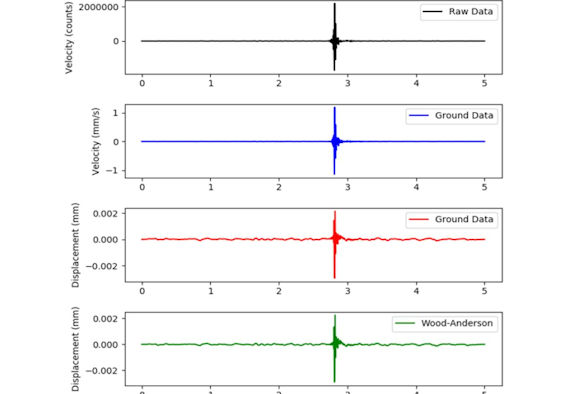
University of Liverpool researchers undertook a study in response to a request from the Department of Business, Energy and Industrial Strategy (BEIS) to assess induced seismicity and the associated traffic light system (TLS) which is used by hydraulic fracturing operations in the UK.
The scope of the study was to measure vibrations at the surface of the ground only and did not include measuring the extent of levels of ground movement underground.
Using the same equipment used to detect and locate earthquakes (seismometers) researchers measured vibrations in the ground surface for a range of everyday activities including bouncing a football, dropping a bag of flour, and traffic on a busy road.
The recorded vibrations were processed to provide measurements of ground movement (velocity and displacement). From these measurements, peak particle velocity (PPV) and peak particle displacement (PPD) were calculated and compared to the ground shaking that a particular magnitude earthquake would produce directly above the Preston New Road hydraulic fracturing site.
Dr Ben Edwards, lead author of the report, said: “We were approached by BEIS to undertake a technical exercise to measure and compare equivalent earthquake magnitude scenarios to everyday activity.”
“We were asked to provide a comparative context for surface vibrations which would measure the same, or similar, at the surface to the induced seismicity recorded at Preston New Road.”
“We felt that this was an important exercise, since the possible surface effect of induced seismicity is not well understood by the public and offered to carry out this task within the scope of our wide-ranging earthquake outreach activities.”
“Given the lack of information available on comparative vibration scenarios for small magnitude earthquakes we undertook our own investigation using our expertise in seismology.”
“The scope of the report was to only measure surface vibrations and did not extend any further to measuring the extent of levels of ground movement underground. As we point out in the report, the spatial extent of earthquake vibrations is spread over a much larger volume.”
The report is publicly available to read here: http://datacat.liverpool.ac.uk/609/2/Seismic%20Context%20Measurements.pdf
The study was not funded by an external organisation.
To find out more about the work seismologists are undertaking locally please read these FAQs